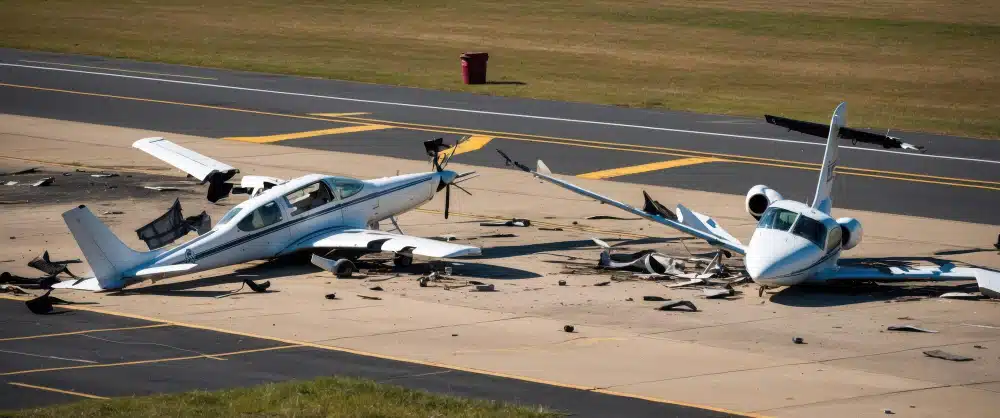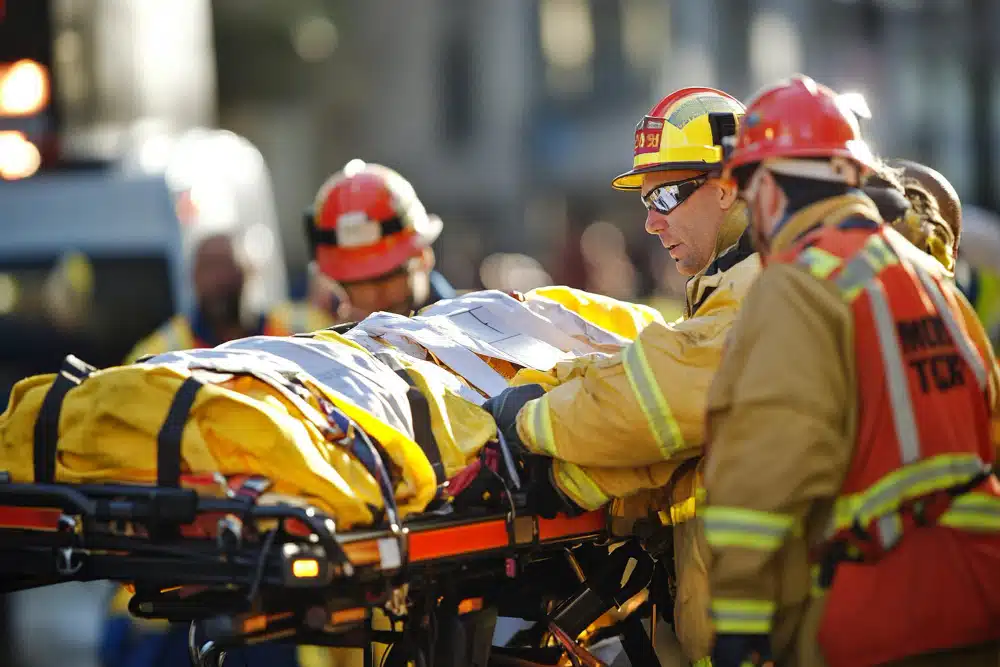20 workers in a passenger van were travelling on I-30 in Hopkins County when they were rear ended by an 18-wheeler. The impact was severe causing the passenger van to roll over and all passengers were injured in varying degrees. At least one passenger was airlifted to a hospital for emergency surgery. A helicopter landed on the scene for injured transport as did the Mass casualty bus.
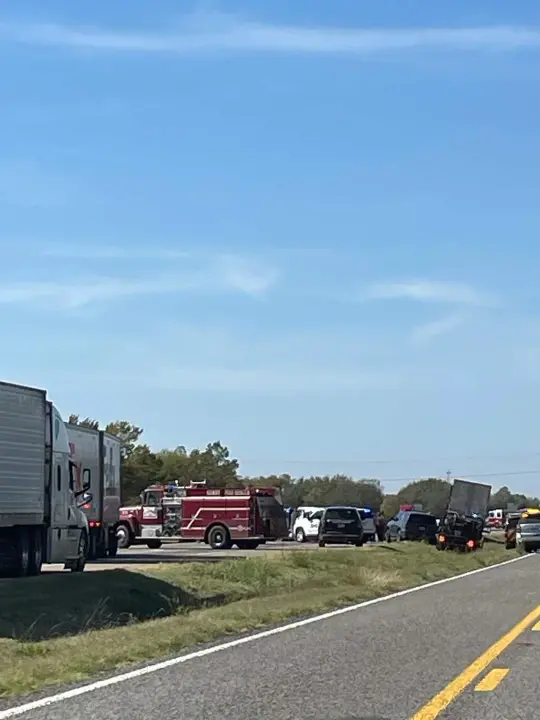
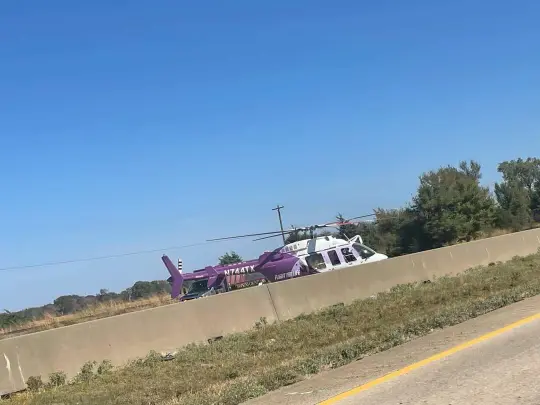
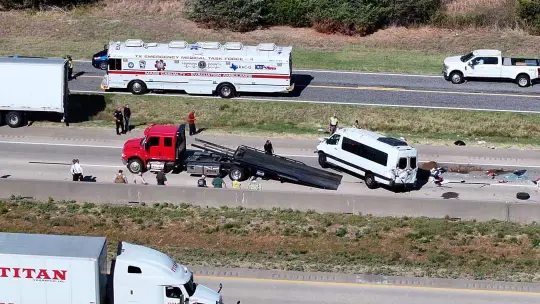
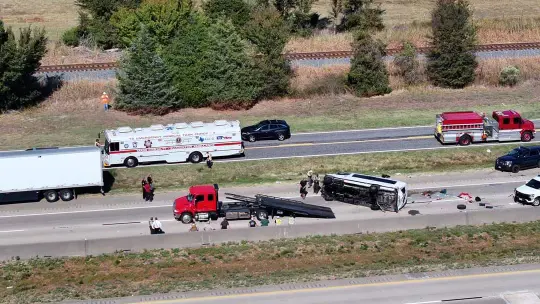
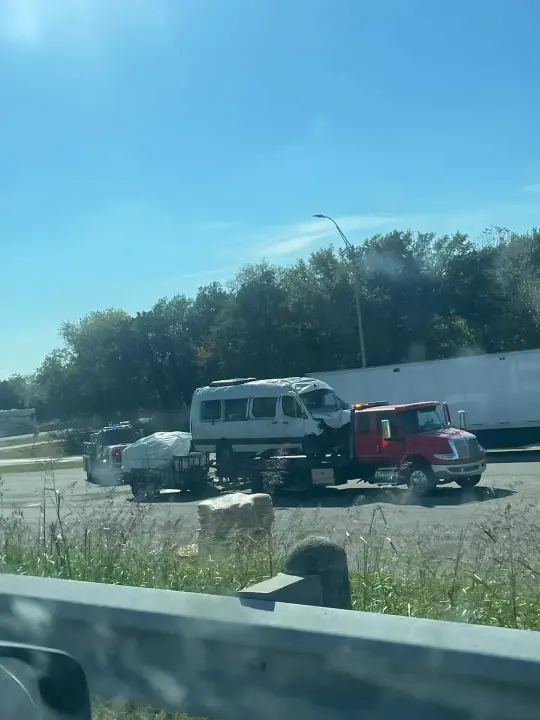
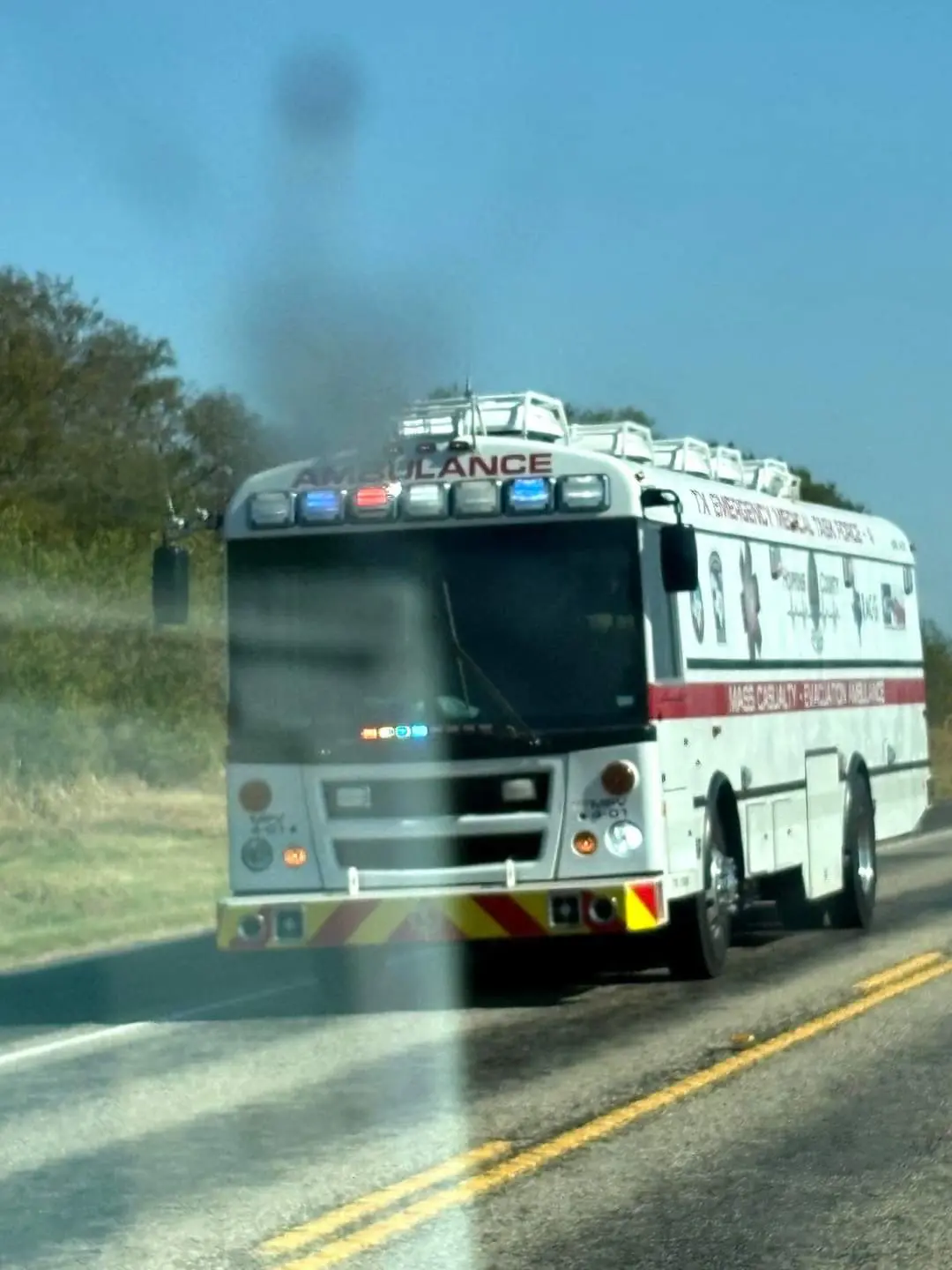
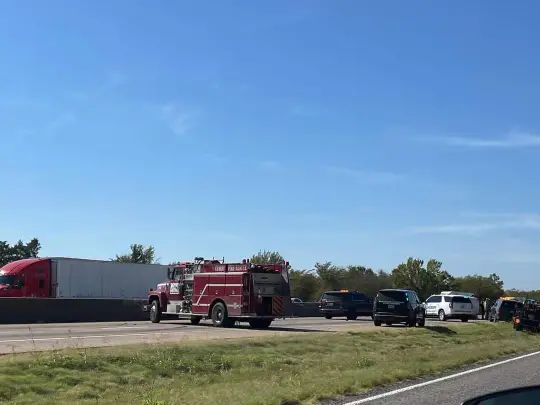
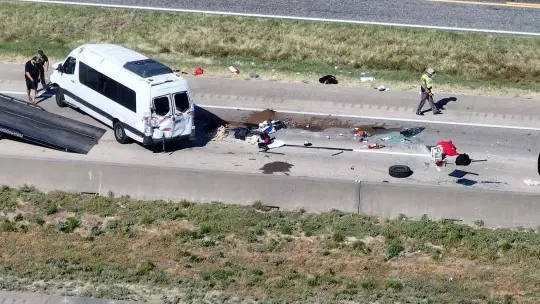
A multiple casualty or multiple injury incident, commonly referred to as MCI, is an accident involving a number or people. A Mass casualty or mass injury incident is defined as an incident that has produced more injuries or casualties than a customary response assignment can adequately handle. Typed of incidents that can produce mass casualties or mass injuries include, but are not limited to:
Multiple vehicle collision
Building collapse
Mass transit accident
Hazmat incidents
WMD
Multiple shootings
Chemical exposure
Incident Command System or ICS is a standardized approach to incident management. The standard protocol utilized by government agencies in cases of emergency is unique and specialized.
Mass casualties/Injuries create the need for expansion of the ICS to include a Medical Sector Officer to be appointed as soon as possible by the IC or Operations Officer. The Medical Officer shall in turn designate as needed: Triage Team(s), Treatment Team(s), and a Transport Officer within the ICS. If the incident is a HAZMAT or an intentional chemical, biological or radiological release, etc, follow HAZMAT guidelines on appropriate decontamination and level of protection. The steps below will be undertaken with the 5 appropriate level of personal protective equipment, and decontamination (if applicable) will be performed on all affected victims per the HAZMAT team guidelines.
What is a Mass Casualty Incident
A mass casualty incident (MCI) is an event where the number of injured or affected individuals is so high that it overwhelms the local emergency response and healthcare systems. MCIs can involve various scales of injury and death, making it challenging for emergency services to provide immediate and adequate care to all patients.
MCIs can be caused by several types of events, including:
- Natural Disasters: Earthquakes, floods, tornadoes, wildfires, hurricanes.
- Human-Made Disasters: Industrial accidents, transportation accidents (such as large-scale car or plane crashes), and structural collapses.
- Intentional Harm: Terrorist attacks, mass shootings, bombings, and chemical or biological attacks.
- Pandemics and Disease Outbreaks: Instances where overwhelming numbers of patients seek medical care due to a widespread illness or virus outbreak.
To respond effectively, emergency personnel use specialized protocols such as the Incident Command System (ICS) and triage systems to prioritize and allocate limited resources, ultimately aiming to save as many lives as possible and prevent further injuries.
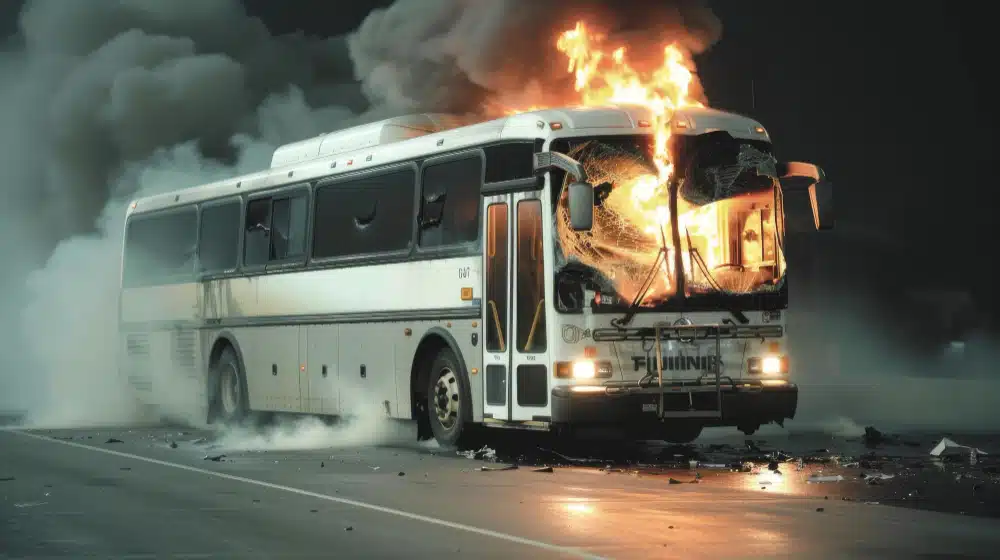
Introduction to Mass Casualty Incidents (MCI)
- Definition: Overview of an MCI as any event that overwhelms local medical resources due to the large number of casualties.
- Purpose of MCI Protocols: Minimize casualties, optimize resources, and streamline care for the injured.
- Examples of MCI Events: Natural disasters, terrorist attacks, transportation accidents, and industrial incidents.
2. Types of Mass Casualty Incidents
- Natural Disasters: Earthquakes, hurricanes, tornadoes, floods, wildfires.
- Human-Made Disasters: Terrorist attacks, mass shootings, chemical spills, transportation accidents.
- Pandemics and Disease Outbreaks: Situations where overwhelming numbers seek medical attention due to widespread illness.
3. Stages of MCI Response
- Preparedness:
- Developing and updating MCI response plans.
- Conducting regular drills and training exercises.
- Stockpiling necessary resources and medical supplies.
- Response:
- Initial assessment and scene safety (evaluating hazards and securing the area).
- Setting up a command structure (Incident Command System – ICS).
- Resource mobilization (personnel, equipment, medical facilities).
- Recovery:
- Transition to standard medical operations.
- Debriefing and mental health support for responders.
- Evaluation of response effectiveness for future improvements.
4. Incident Command System (ICS) and MCI Organization
- Role of ICS: Provides a standardized management structure.
- Core ICS Functions:
- Command: Sets objectives and priorities, manages overall response.
- Operations: Conducts tactical operations, including triage and treatment.
- Planning: Manages resources, documents response activities.
- Logistics: Supplies responders with equipment, food, medical care.
- Finance: Tracks costs, manages financial aspects of the response.
5. Triage Protocols in MCI
- Definition of Triage: Process of sorting patients based on severity to prioritize care.
- Triage Categories:
- Immediate (Red): Life-threatening but survivable injuries if treated quickly.
- Delayed (Yellow): Serious but not immediately life-threatening injuries.
- Minor (Green): Walking wounded, minor injuries.
- Deceased (Black): Deceased or non-survivable injuries.
- Triage Methods: START (Simple Triage and Rapid Treatment) and SALT (Sort, Assess, Life-Saving Interventions, Treatment/Transport).
6. Medical Protocols and On-Site Treatment
- On-Site First Aid and Stabilization: Initial care to stabilize patients.
- Transport Protocols: Organizing and prioritizing transportation to medical facilities.
- Communication: Coordinating among hospitals, emergency responders, and dispatch.
7. Logistics and Resource Management
- Personnel Resources: Coordinating EMTs, paramedics, doctors, and other responders.
- Supply Management: Medical supplies, transportation, temporary shelters.
- Coordination with External Agencies: Involving the Red Cross, National Guard, FEMA as needed.
8. Post-Incident Procedures
- Debriefing: Conducting a post-incident review to assess effectiveness and identify areas of improvement.
- Mental Health Support: Offering counseling and support to responders, survivors, and families.
- Documentation and Reporting: Accurate record-keeping for legal and administrative purposes.
- Evaluation and Revision of MCI Protocols: Updating response plans based on lessons learned.
9. Training and Public Education
- Ongoing Training: Regular simulations, drills, and continuing education for responders.
- Community Preparedness Programs: Educating the public on basic emergency response actions in an MCI.
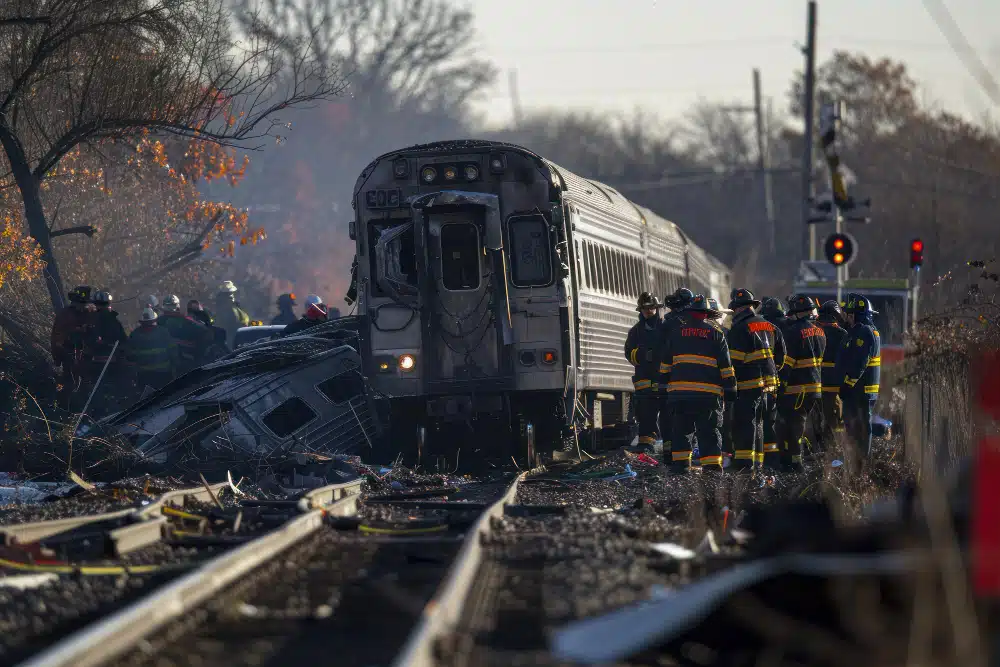
A Personal Injury Attorney Investigating a Mass Casualty or Mass Injury case will need to conduct a thorough investigation of the accident:
Initial Case Assessment
- Client Intake and Interview:
- Meet with clients (individuals involved in the incident) to understand the details and their injuries.
- Gather preliminary information, including medical records, accident location, and witness information.
- Determine Viability of the Case:
- Assess the number of clients and potential injuries.
- Identify legal grounds for claims (e.g., negligence, product liability).
2. Gather Incident Details
- Police and Accident Reports:
- Obtain official police and accident reports to gather initial facts about the incident.
- Review citations, officer observations, and preliminary assessments.
- Traffic Camera and Surveillance Footage:
- Request and review traffic camera footage, nearby business security footage, or dashcam recordings.
- Eyewitness Accounts:
- Interview eyewitnesses and obtain affidavits or statements about the incident and sequence of events.
- Vehicle Records:
- Collect information on the vehicles involved, including maintenance records, ownership, and any modifications.
3. Evidence Collection and Preservation
- Scene Investigation:
- Visit the scene to document conditions, road layout, weather, traffic signs, and other relevant details.
- Photograph the scene and create diagrams if necessary.
- Preserve Vehicle Evidence:
- Secure and inspect the involved vehicles to document damage, airbag deployment, and mechanical issues.
- Black Box Data Retrieval:
- Retrieve data from vehicle event data recorders (EDRs) or black boxes to analyze speed, braking, and impact forces.
4. Injury Documentation
- Medical Records and Bills:
- Obtain and review clients’ medical records, bills, and treatment history.
- Document ongoing medical needs and potential long-term effects.
- Expert Medical Opinion:
- Work with medical experts to assess the extent of injuries, potential disability, and rehabilitation needs.
- Mental Health Impact:
- Consider psychological evaluations to document trauma, anxiety, or PTSD resulting from the incident.
5. Determining Liability
- Identify Responsible Parties:
- Evaluate who may be liable, including drivers, vehicle owners, manufacturers, and possibly government entities (e.g., road maintenance).
- Analyze Potential Causes of the Incident:
- Investigate factors like distracted driving, speeding, mechanical failure, road conditions, and environmental factors.
- Accident Reconstruction:
- Work with an accident reconstruction expert to model the incident and establish the timeline and causation.
6. Insurance and Financial Analysis
- Review Insurance Coverage:
- Analyze insurance policies for all parties involved, including liability, medical, and uninsured/underinsured motorist coverage.
- Evaluate Damages:
- Assess the economic impact, including medical expenses, lost wages, and property damage.
- Consider Future Expenses:
- Include anticipated long-term medical expenses, rehabilitation costs, and diminished earning potential in the claim.
7. Engaging Experts and Specialists
- Accident Reconstruction Experts: Provide technical analysis and testimony on the accident’s cause.
- Medical Experts: Offer opinions on injuries, expected recovery, and potential long-term effects.
- Economic and Vocational Experts: Calculate economic losses, reduced earning potential, and vocational impacts.
- Psychological Experts: Assess the emotional and psychological toll on clients.
8. Building the Legal Case
- Develop Case Strategy:
- Determine whether to pursue settlement, litigation, or alternative dispute resolution.
- Draft and File Legal Documents:
- Prepare complaints, claims, or demand letters based on evidence and clients’ injuries.
- Negotiate with Insurance Companies:
- Engage with insurance adjusters to negotiate settlements that cover clients’ damages fully.
9. Trial Preparation (if necessary)
- Pre-Trial Motions and Discovery:
- Conduct depositions, subpoena records, and file pre-trial motions to build a strong case.
- Mock Trials and Jury Research:
- Use mock trials or focus groups to gauge reactions to evidence and witness testimony.
- Prepare Witnesses and Experts for Testimony:
- Coach clients, witnesses, and experts on courtroom demeanor and testimony.
10. Post-Incident Follow-Up
- Client Counseling and Support:
- Provide guidance on navigating medical care, insurance claims, and recovery.
- Settlement Management and Distribution:
- Ensure fair and prompt distribution of any settlements or court awards.
- Case Review and Lessons Learned:
- Evaluate the case outcome and update legal practices and investigative methods based on experience.
The victims of this most recent mass casualty incident in Hopkins County, TX are represented by Law firm of McKay Law TX. Lindsey McKay Is an expert in Mass Casualty Litigation and was retained by all 20 victims of the truck accident to represent them in a claim against the truck driver and trucking company who were negligent and caused injury to the victims.
